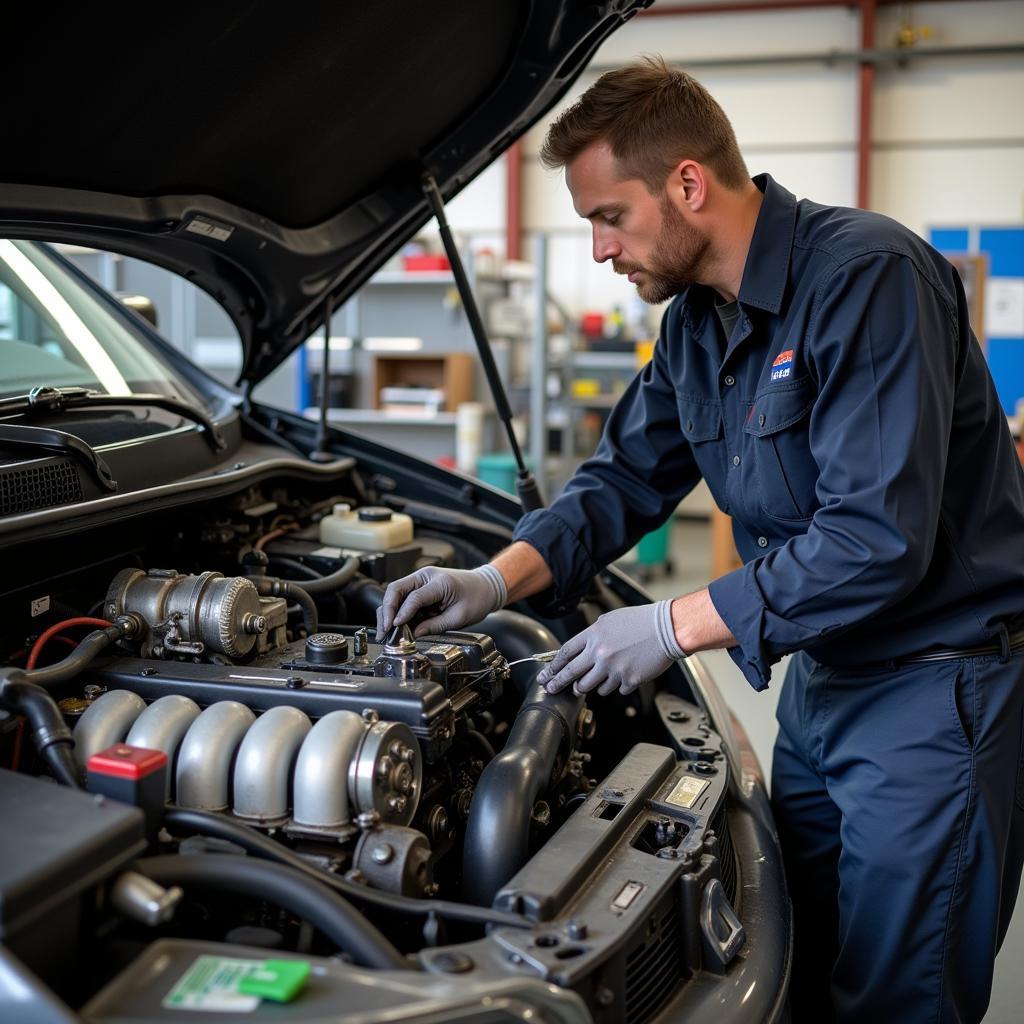Repairing a salvage car can be a complex and challenging undertaking, requiring significant mechanical knowledge, specialized tools, and a considerable time investment. This guide will provide you with a detailed overview of the process, helping you understand the complexities and considerations involved in bringing a salvage car back to life. We’ll delve into the crucial steps, common pitfalls, and essential tips for a successful salvage car repair.
Choosing to repair a salvage car can be a financially attractive option, potentially saving you a substantial amount compared to buying a used car in good condition. However, it’s essential to approach this project with a realistic understanding of the potential costs and challenges. A thorough inspection and assessment of the vehicle’s damage are crucial before making any decisions. You should also carefully consider the availability of parts, especially for older or less common models. Repairing a fiberglass bumper, for example, can present unique challenges. Check out our guide on how to repair fiberglass bumper of a car for more information.
Assessing the Damage: The First Step in Salvage Car Repair
Before starting any repairs, a comprehensive damage assessment is paramount. This involves meticulously inspecting every part of the vehicle, from the bodywork to the engine and internal components. Documenting the damage with photos and detailed notes is highly recommended. This documentation will be invaluable when sourcing parts and planning the repair process. Remember, hidden damage can significantly increase the cost and complexity of the project, so a thorough assessment is key.
Are you unsure about how long a car repair might take after an accident? Our guide on how long for car repair after accident provides valuable insights into this process.
Sourcing Parts for Your Salvage Car
Finding the right parts for a salvage car can be a significant hurdle. While used parts can offer cost savings, their condition and reliability can vary. New parts, on the other hand, provide peace of mind but come at a higher price. Online marketplaces, salvage yards, and auto parts stores are good places to start your search. Be prepared to invest time in comparing prices and verifying the compatibility of the parts with your specific car model.
Bodywork and Structural Repairs: Bringing Your Salvage Car Back to Shape
Repairing the bodywork and structural components of a salvage car often involves straightening bent metal, welding, and replacing damaged panels. This stage requires specialized tools and skills, and it’s often best left to experienced professionals. However, minor dents and scratches can be addressed using DIY methods. For minor scratches, you can find helpful tips in our guide on how to use car scratch repair pen.
Mechanical Repairs: Getting Your Salvage Car Running Smoothly
Mechanical repairs can range from simple tasks like changing fluids and filters to more complex procedures such as engine or transmission rebuilds. A thorough understanding of the vehicle’s mechanical systems is essential for this stage. If you’re not comfortable working on the mechanical components yourself, seeking professional help is highly recommended.
 Salvage Car Engine Repair
Salvage Car Engine Repair
Electrical System Repairs: Ensuring Everything Works as It Should
The electrical system in a salvage car can be particularly susceptible to damage. Troubleshooting and repairing electrical issues can be challenging, often requiring specialized diagnostic equipment. From faulty wiring to damaged sensors, addressing electrical problems is crucial for the safe and reliable operation of the vehicle.
Finishing Touches: Painting and Interior Restoration
Once the structural, mechanical, and electrical repairs are complete, the final stage involves painting and restoring the interior. A fresh coat of paint can dramatically improve the appearance of the car. Cleaning, repairing, or replacing damaged interior components will enhance the overall aesthetic and comfort of the vehicle. Learn more about repairing car bodywork in our guide how to repair damaged car bodywork. If you’re dealing with a cracked bumper, our guide on how to repair car bumper crack will provide valuable information.
Conclusion: Is Repairing a Salvage Car Worth It?
Repairing a salvage car can be a rewarding experience, but it requires careful planning, dedication, and a realistic assessment of the costs and challenges involved. By following the steps outlined in this guide, you can increase your chances of successfully restoring a salvage car to its former glory. Remember, thorough research and preparation are key to a successful salvage car repair project.
FAQ
- Is it safe to drive a repaired salvage car? Yes, provided all repairs are carried out correctly and the vehicle passes all necessary inspections.
- How much does it cost to repair a salvage car? The cost varies greatly depending on the extent of the damage and the specific car model.
- Where can I find parts for a salvage car? Salvage yards, online marketplaces, and auto parts stores are good sources for parts.
- Do I need professional help to repair a salvage car? While some repairs can be done DIY, complex mechanical or structural repairs often require professional expertise.
- What are the legal requirements for repairing a salvage car? Requirements vary by state, so it’s essential to check your local regulations.
- How can I ensure the quality of repairs on a salvage car? Choose reputable repair shops and thoroughly inspect the work before accepting the vehicle.
- Can I insure a repaired salvage car? Yes, but it may be more challenging to obtain insurance and premiums may be higher.
Need assistance? Contact us via WhatsApp: +1(641)206-8880 or Email: [email protected]. Our customer support team is available 24/7.

Leave a Reply